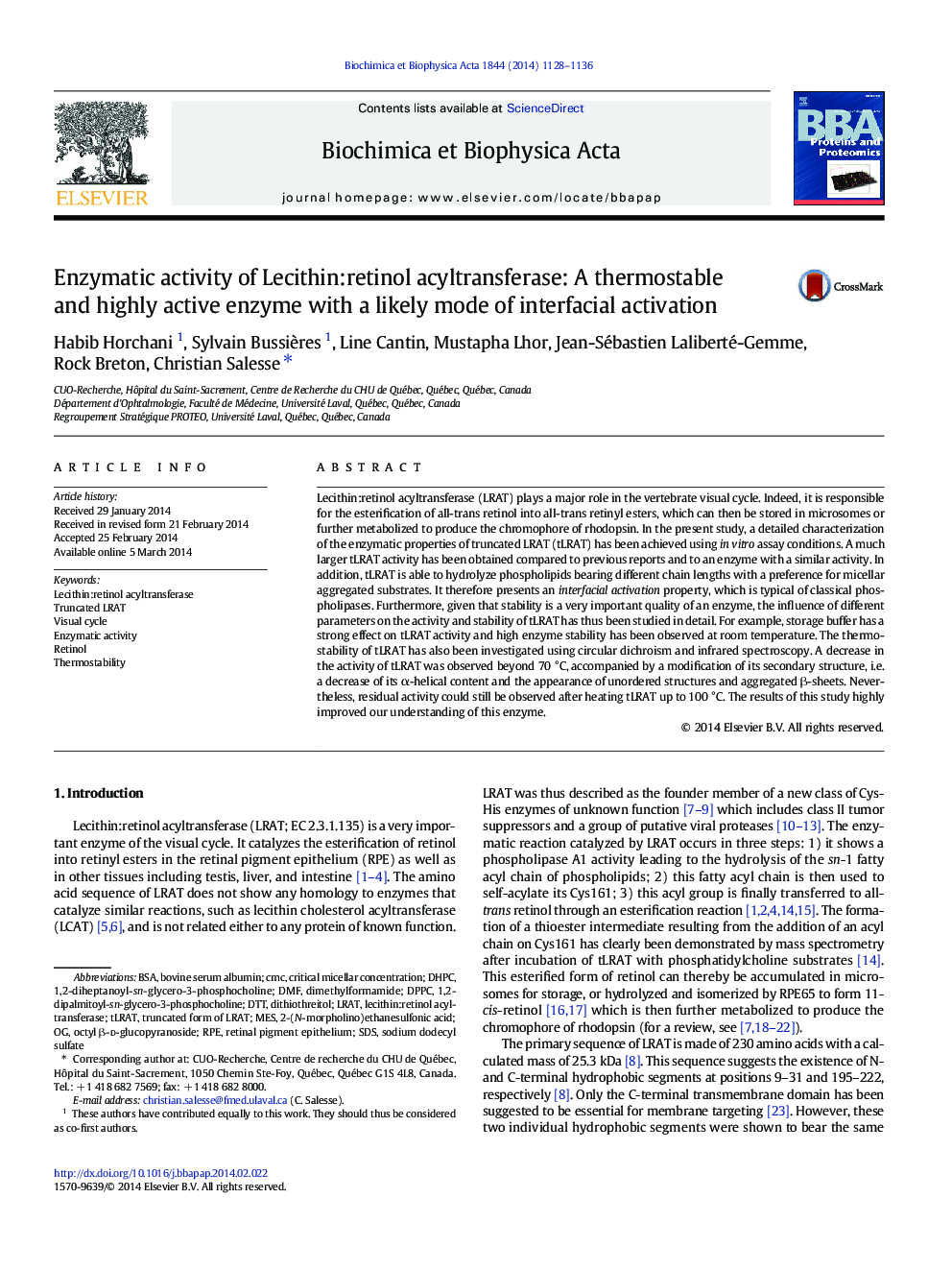| کد مقاله | کد نشریه | سال انتشار | مقاله انگلیسی | نسخه تمام متن |
|---|---|---|---|---|
| 1179626 | 962786 | 2014 | 9 صفحه PDF | دانلود رایگان |
• Truncated LRAT is a highly active enzyme.
• It shows preference for phospholipids with short fatty acyl chains.
• It presents the typical interfacial activation property of phospholipases.
• It demonstrates high enzyme stability at room temperature.
• It exhibits thermostability.
Lecithin:retinol acyltransferase (LRAT) plays a major role in the vertebrate visual cycle. Indeed, it is responsible for the esterification of all-trans retinol into all-trans retinyl esters, which can then be stored in microsomes or further metabolized to produce the chromophore of rhodopsin. In the present study, a detailed characterization of the enzymatic properties of truncated LRAT (tLRAT) has been achieved using in vitro assay conditions. A much larger tLRAT activity has been obtained compared to previous reports and to an enzyme with a similar activity. In addition, tLRAT is able to hydrolyze phospholipids bearing different chain lengths with a preference for micellar aggregated substrates. It therefore presents an interfacial activation property, which is typical of classical phospholipases. Furthermore, given that stability is a very important quality of an enzyme, the influence of different parameters on the activity and stability of tLRAT has thus been studied in detail. For example, storage buffer has a strong effect on tLRAT activity and high enzyme stability has been observed at room temperature. The thermostability of tLRAT has also been investigated using circular dichroism and infrared spectroscopy. A decrease in the activity of tLRAT was observed beyond 70 °C, accompanied by a modification of its secondary structure, i.e. a decrease of its α-helical content and the appearance of unordered structures and aggregated β-sheets. Nevertheless, residual activity could still be observed after heating tLRAT up to 100 °C. The results of this study highly improved our understanding of this enzyme.
Figure optionsDownload high-quality image (108 K)Download as PowerPoint slide
Journal: Biochimica et Biophysica Acta (BBA) - Proteins and Proteomics - Volume 1844, Issue 6, June 2014, Pages 1128–1136
